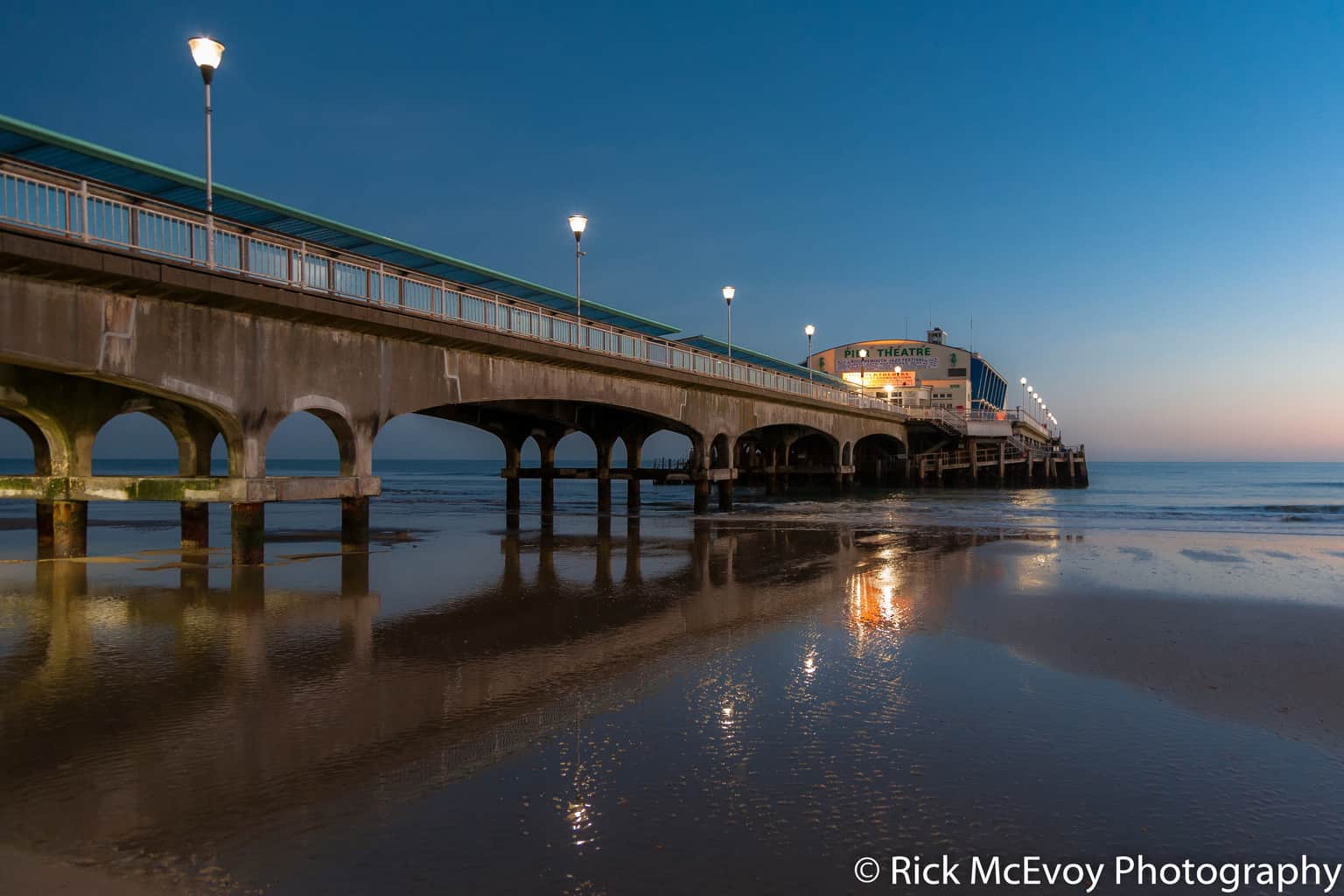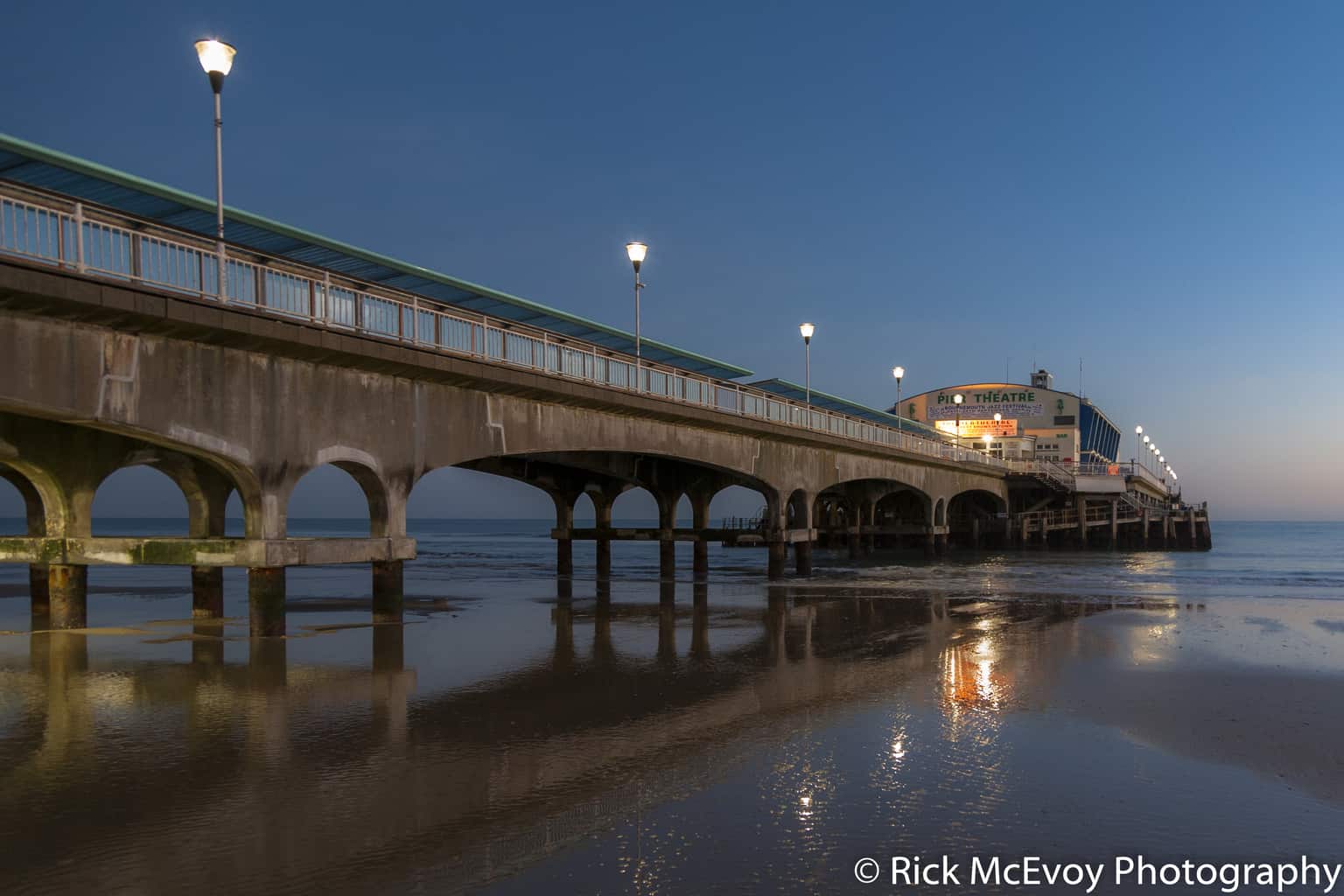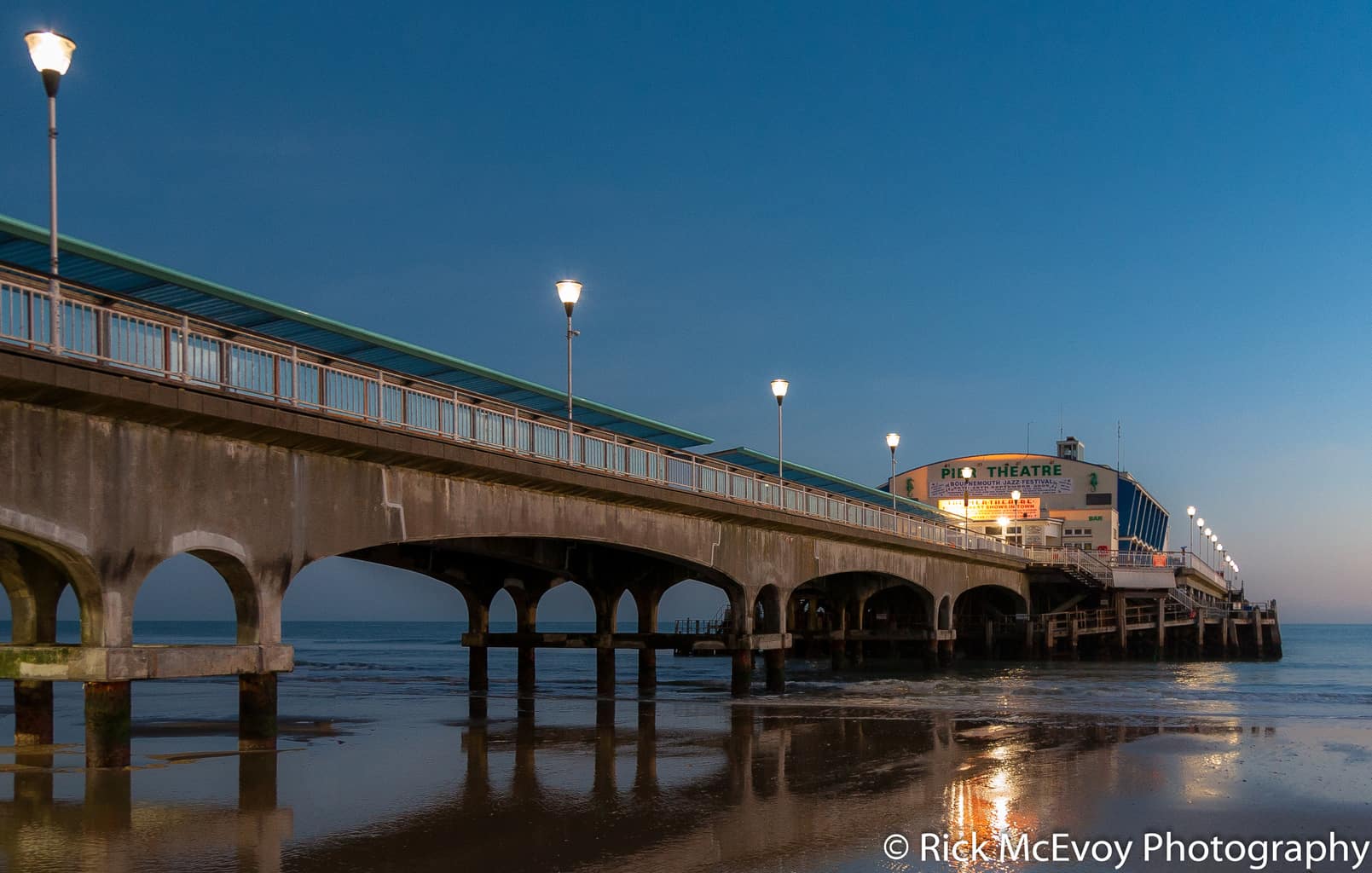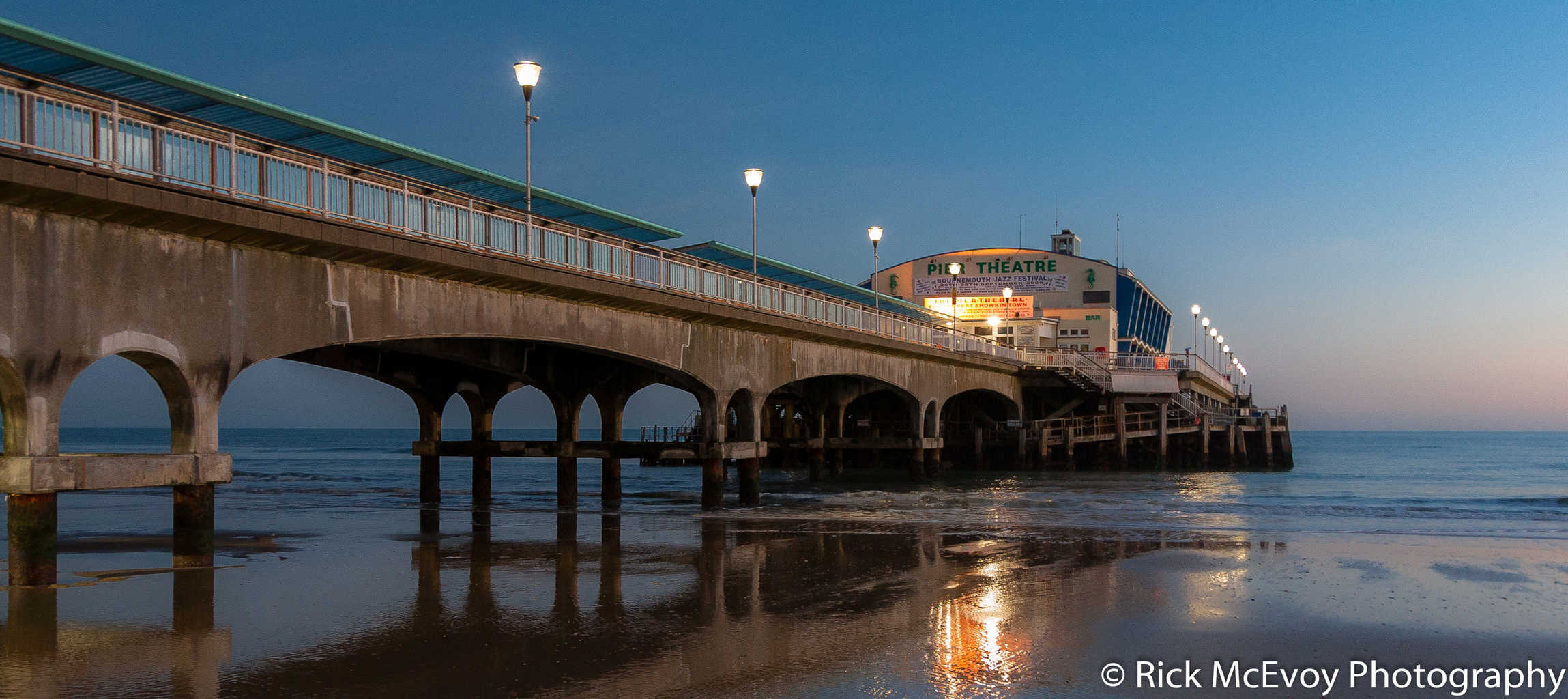Another of my top 10 images is this shot of Bournemouth Pier.

I am currently experimenting with cropping images. I have for too long now just settled for the default image shape dictated by my cameras sensor.
I have a full frame Canon digital single lens reflex camera, or DSLR for short. The sensor is 24mm high * 36mm wide. This is a hangover from the days of film – an actual 35mm film negative is exactly this size. You can also get cropped sensors, typically they are cropped by a factor of 1.6 in Canon DSLRs. Cropped sensor cameras are generally cheaper than full frame DSLRs, in part because of the smaller sensor.
Crude price comparison – Canon 6D costs £1142, and the Canon 70D £739 ( as listed at WEX Photographic http://www.wexphotographic.com/digital-slr-cameras-canon/b3065-m37). Not very scientific but you get the idea.
Cropped sensor or full frame sensor – you are still getting an image in the same size proportions, ie 24*36mm, 22.2 mm × 14.8 mm for a cropped sensor, which both equate to 2 units high * 3 units wide, or the format 3*2 as it is more commonly known. I wil talk more about sensors in another post, and why they are the same size as film, and also the cropped sensors.
For now I am going to concentrate on cropping.
As I said for too long I have been relying on the image size determined by my DSLR. Take this image for example. I love this shot of Bournemouth Pier at twighlight. All the elements are there for me. I am going to put the original image next to a copy cropped just now (cropping a virtual copy in Adobe Lightroom takes seconds).



I did a third copy. Now which image I prefer, and other people prefer, is a matter of taste. I like the last, widescreen format crop (these are all free crops with no proportion constraints at all).
I do like uniformity inmy website images, but these three images show how cropping can change an image, and why it is nothing to be feared.
I am an architectural photographer working in Bournmeouth, Poole, Sandbanks, Dorset and Hampshire.